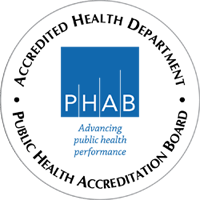Mock Food Inspection

Hi, I'm Jane Doe Inspector, and I will lead you through a mock food inspection.
I've been a food inspector for some time, and I think you will enjoy learning about the food inspection process and how a typical inspection is done.
Use this information to train your staff within your own food safety program to operate audit/inspection ready every day.
The following steps will take place during a food inspection (not necessarily in this order):
- Inspector will show identification to the person in charge who must demonstrate food knowledge and represent the establishment during the inspection. The person in charge can demonstrate knowledge by achieving one of these measures:
- Compliance - Compliance with Code is indicated when there are no red, Priority item violations noted during an inspection,
- Certification - The person in charge is certified as a food protection manager through an ANSI approved training program, or
- Knowledge - The person in charge correctly responds to questions regarding food safety practices and principles asked by the environmental health specialist.
- Evaluation of the managerial control of the food establishment from receiving and storing foods properly to preparing food that requires time/temperature control (TCS Foods).
- Evaluation of worker illness policy in place and practiced by person in charge and food workers.
- Evaluation of proper holding temperatures and proper cooling methods in place.
- Evaluation of date marking food items and consumer advisory compliance on the food establishment’s menu.
- Evaluation and discussion of no-bare-hand-contact with ready-to-eat foods.
- Evaluation of the ware wash area and proper use of the three compartment sink.
- Conclusion and review of the inspection results with the person in charge.
During an inspection, we pay particular attention to the 5 Risk Factors that can contribute to or cause a foodborne illness:
- Foods from unsafe or unapproved sources. Always refuse dented cans upon delivery. Rotate produce and discard moldy food items. Always use approved vendors with correct labeling. No home products are allowed. All food must be prepared in a permitted kitchen facility.
- Poor personal hygiene and ill food workers. Hand washing basins should always be unblocked and stocked with single use paper towels and soap. Food workers should actively exhibit proper hand washing procedures in between tasks and when entering kitchen areas. A written illness policy should be in place to inform workers that they cannot work with symptoms such as: fever, vomiting, diarrhea, sore throat, jaundice. "Ready-to-eat" foods that will be served without any further cooking or processing are handled with a barrier between staff hands and the food. A "barrier" could be tongs, wax paper or gloves.
- Inadequate cooking temperatures. Metal stemmed thermometers should be in regular use by your cooking staff to ensure proper cooking temperatures. Hot food must be cooked to the following correct temperatures:
- 165 degrees for 15 seconds - poultry, stuffed foods, stuffing, casseroles, reheated time/temperature control for safety foods
- 155 degrees for 15 seconds - hamburger, sausage, injected meats, eggs for hot holding
- 145 degrees for 15 seconds - fish, shrimp, pork, eggs, whole roasts, beef steaks and lamb for immediate service
- Cross contamination and contaminated equipment. Always keep raw meats separated properly on cutting boards/prep areas and stored correctly in walk-in coolers. The dishwashing area should be set up so that clean dishes cannot be contaminated by dirty dishes. Three compartment sinks must be set up in order to assure proper sanitizing of equipment through a three-step process (WASH, RINSE, SANITIZE). Always verify that the dish machine meets minimum temperature or chemical sanitizing requirements and test strips for chemical sanitizing are provided. All equipment should be cleaned and sanitized properly after four hours of use.
- Improper holding temperatures and cooling procedures. Cool hot foods from 135 degrees to 70 degrees in 2 hours and then from 70 degrees to 41 degrees or below within 4 hours, for a total of 6 hours in the safe cooling process. Use rapid cooling, ice baths or ice wands for assistance. Divide food product into multiple containers while cooling. Leave the lids off the top of the containers while cooling. Metal pans cool better than plastic if available. Cold food should always be held at 41 degrees or below. Walk-in cooler thermometers should be working properly and visible at all times. Hot food should always be held at a minimum of 135 degrees after the food item has reached the proper cooking temperature. Metal stemmed thermometers should be used throughout your establishment by your staff to ensure correct holding temperatures.
An environmental specialist may visit a food establishment for several different reasons:
- Routine inspections
- Re-inspections
- Investigation of complaints by customers
- Investigation of food borne illnesses
- Educational visits
The main duties of an environmental specialist are to observe, monitor, ask questions and educate.



Click here to leave a comment or concern.